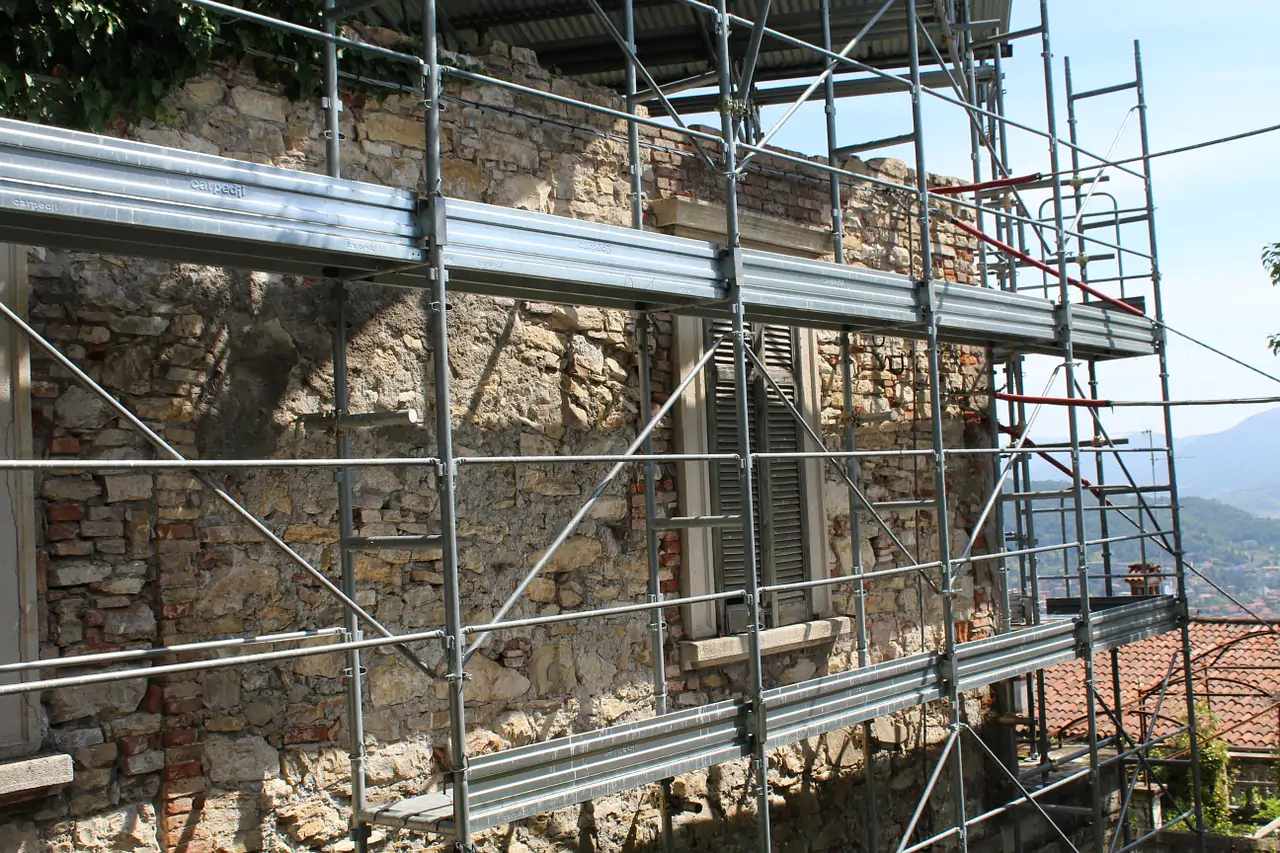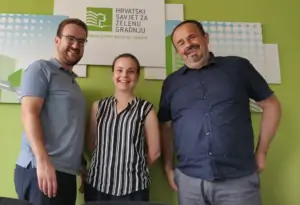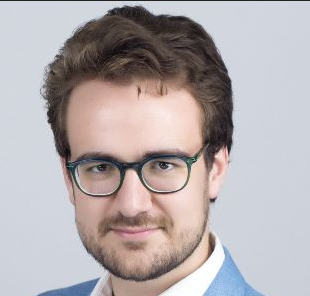EUKI Interview: Mainstreaming Sustainable Buildings in Europe
by , GIZ/EUKI, Retrofit HUB
Buildings are not only essential for life – they are also very hard to decarbonise. Throughout the past years and climate action efforts not enough progress has been made in transforming the ways we build, renovate, retrofit and rebuild. Why is the buildings sector so problematic in terms of reducing greenhouse gas (ghg) emissions and what can be done to mainstream sustainable buildings in Europe? We spoke with project manager Aleksandar Jelovac, landscape architect Ana Šenhold and civil engineer Marko Markić from the EUKI projects Retrofit HUB and Mitigating Greenhouse Gas Emissions in Heritage Buildings.

The building sector accounts for 40% of the energy consumption and 36% of the ghg emissions in the European Union. Where do these stunning numbers come from?
Aleksandar: Usually most people think about the operational cost of using a building and all the energy first. This is what we call operational carbon. But there is also a sector of extracting resources from earth, producing materials, bringing them to the construction site, building them, deconstructing them. This is called embodied carbon which itself accounts for 11 to 12 % of greenhouse gas (ghg) emissions and has been paid little attention to. We need to focus on both factors.

Why is the building sector such a problem child?
Ana: We have, in a way, two kinds of building stock: we have buildings that are old, and we have new buildings that are being built. Regarding new buildings it’s easy to create a law and decide that they need to be nearly zero energy buildings, or that they need to use this kind of heating or cooling system. But with the building stock that is already existing, it’s quite hard to just create laws that are going to make these things change. That’s challenging in Croatia, but accounts for the EU as well.
Marko: That’s true, and in all of Europe the issue is who is going to inhabit the new buildings? In Europe, the population is not growing. So why do we need new buildings at all? Retrofit and Renovation are solutions but at some point, you’ll have to ask feasibility questions. Does a renovation cost more than building a new building which has a better standard? What happens with historical and heritage buildings? This is tricky, but of course we are not going to destroy them. What we need are more and better feasibility studies to answer the question of when it is better to renovate or to build.
Thanks for the bigger picture! Which are the specific issues in your home country Croatia?
Marko: When it comes to public buildings in Croatia one specific issue is financing. There are always some kind of subsidy schemes, but if you wanted to invest in sustainable technologies and renovation like the ESCO model, the administrative part is very burdensome. Also, in Croatia multi-apartment buildings are not owned by just one person, like in other parts of Europe. In some buildings there are more than 100 apartment owners. So, you need the consensus of all parties involved. Another thing that we need to solve quickly is about building rules. There is no regulatory solution yet for putting renewable energy sources on the roof of multi-apartment buildings, but that needs to be done by the government and could be learned from other EU member countries.
Ana: And I think also, like in some other parts of Europe, in Croatia centralisation is a huge problem. Smaller, local areas become abandoned because of a lack of jobs and financial support. So, people are moving to the cities where new buildings are being built constantly. There is not enough focus on retrofit and renovation in rural areas.
Project manager Aleksandar Jelovac on stakeholder involvement with the Retrofit HUB project:
What is the purpose of your EUKI project Retrofit Hub?
Aleksandar: The intention behind our project is to reach the goals of decarbonisation. First, we identify the biggest contributors, which in Croatia are the residential buildings. Then we work out a plan to support their specific decarbonisation. In a next step we approach the different stakeholders, like the residents, the facility managers, the ministries and so on, and involve them. This could mean to make more useful education available. Or to bring in more experts for technical solutions, for example to find renewable sources of energy or to install heat pumps. A big challenge is communication! Not only among the residents but also across ministries on a national level. One of the greatest advantages of our project is that with our events and trainings we can bring together all different stakeholders. And when they meet, they start talking, exchange ideas and fruitful collaborations come out of that. With this unfortunate situation in the Ukraine, we actually see an increasing interest in renovation, so we hope to pick up that dynamic.
Marko: Yes, if there is one thing that will move people towards renewables it will be energy independence!
As a by-product of the current energy crisis, the demand for heat pumps is exploding in Germany. Yet, there are simply not enough mechanics available who could install them. Do you see the same thing happening in Croatia?
Aleksandar: Yes, it’s the same in Croatia. There is a lack of working people, so the prices have gone up, too. But still, even if you’re a millionaire who could pay all the money now, you would still have to wait in line because the demand is incredibly high right now.
Marko: I do believe this is only temporary and will level up at some point. But heat pumps also need electricity. So, we want to have sustainable heat pumps connected to renewable energy sources. A good example is Zagreb where they have regional central heating, which is even better than heat pumps. To install heat pumps in existing multi apartment buildings in Croatia is probably impossible. For those buildings with individual heating systems, like boilers connected to a chimney, heat pumps are probably the only solution. But that’s also only true when talking about highly urbanised and dense regions. Where we don’t have the possibility to get heat out of the ground, we try to move the energy sources on the roofs.
Thanks for your answers! The last question is a thought experiment: We are living in the year 2050, the EU is climate-neutral and the buildings sector successfully decarbonised. What happened?
Aleksandar: That’s a very beautiful yet complex question. Everybody’s vocal point shifted towards asking the right questions. The views of the European Commission and the targets of the European Green Deal have become hardcore mainstream. Fossil fuel companies have run out of business and are shifting their focus on green and sustainable topics. Everyone is communicating much more, really working hand in hand and harder towards these goals. Everyone is thinking in terms of solutions and generating new ideas all along. People with good ideas are being heard, seen and supported so that ideas are implemented in new impactful projects quickly.
Ana: Plus, everyone is supporting each other and making the best contribution nationally, on a European level and internationally. This is important because different countries and societies don’t have the same abilities to work towards these goals in the same way.
Aleksandar: Agreed! Wealthier countries certainly bear a bigger responsibility, but in the end, we are all in this together. So, let’s hope that in 2050 we will all sit together again and reflect on 2022, this conversation and what happened in the years in between to reach climate-neutrality.
That’s a wonderful perspective and an optimistic closing for the interview. Thank you very much for this interesting conversation.


